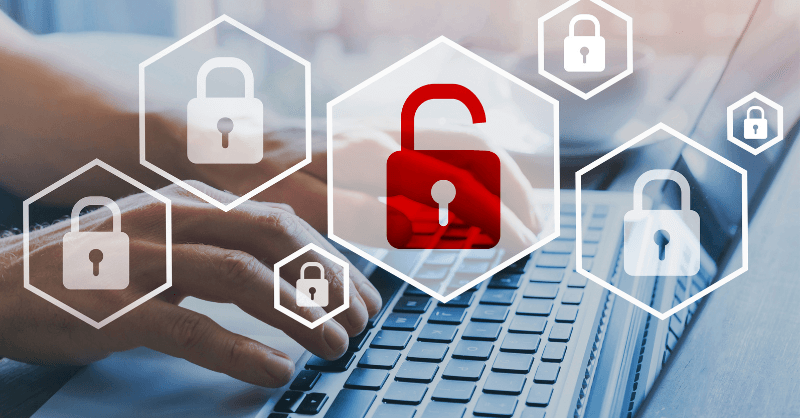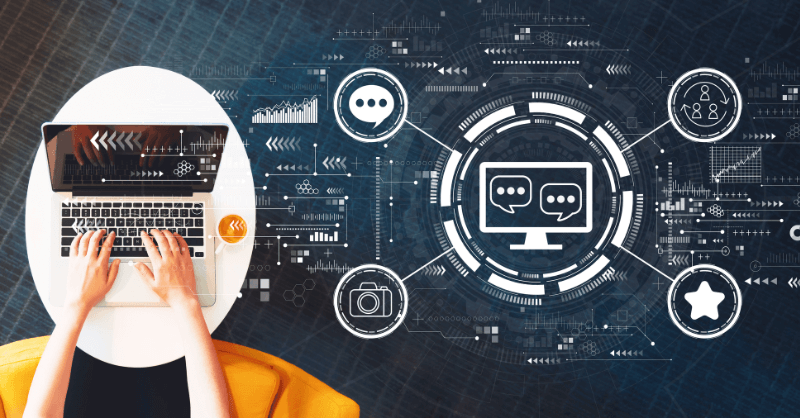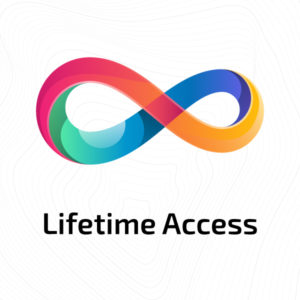In the post-pandemic world, your career path and opportunities might look a whole lot different than they did at the end of 2019. The pandemic has probably shifted things into high gear for those who want to change their career path and are trying to move into the tech industry. Learning a coding language sounds appealing when you want to recession-proof your career. That’s why we have this blog on the best way to learn Python.
There are many resources online that offer a simple way; you can learn about web development and programming. In these resources, such as blogs, articles, and videos, you have seen people talking about Python’s programming language.
Nowadays, Python is trendy and famous among coders because of its adaptability. For this reason, it has become one of the most used programming languages in the world. Especially among the beginners, as it gives them a chance to branch into pretty much any coding field that you want to.
According to The Economist, Python is heading towards the title of the most popular programming language in the world. A popular coding language matters because if the language is widespread, more employers start using it as their language of choice. As a result, you will have more chance of being hired by employers.
Unfortunately, many Python teaching resources online and offline are uninteresting and generic. This type of resource makes it very hard for a beginner to stick to best resources to learn python. For this reason, we, One Education, put together this best step by step teaching guide for you to learn Python.
Table of Contents
What is Python?
Best Ways to Learn Python is a high-level, interpreted, general-purpose programming language with easy syntax and dynamic semantics. It is one of the most popular choices among modern software developers.
The data structure is high-level and combined with dynamic typing and dynamic binding, making it very attractive for Rapid Application Development. Also, it is used as a scripting or glue language to connect existing components.
You create beautiful applications with less effort and much more ease since it is much easier than other programming languages. The most common use of Python is the following:
- The desktop app and software development
- Back end (or server-side) web development
- Mobile app development
- Writing scripts for a system (creating instructions that tell a computer system to “do” something)
- Processing big data and performing mathematical computations
Who Should Learn Python?
The Python range may sound intimidating to you, but it is also known as an easy to learn, easy to use programming language. The language is suitable for anyone interested in the field of Python Programming. Also, anyone who wants to have a better understanding of the fundamentals of the programme. Well, you should learn if you are:
- Data Scientists
- Beginners in coding
- Web and mobile app developers
- Software engineers
- Anyone interested in learning computer programming and desire to work in the tech industry.
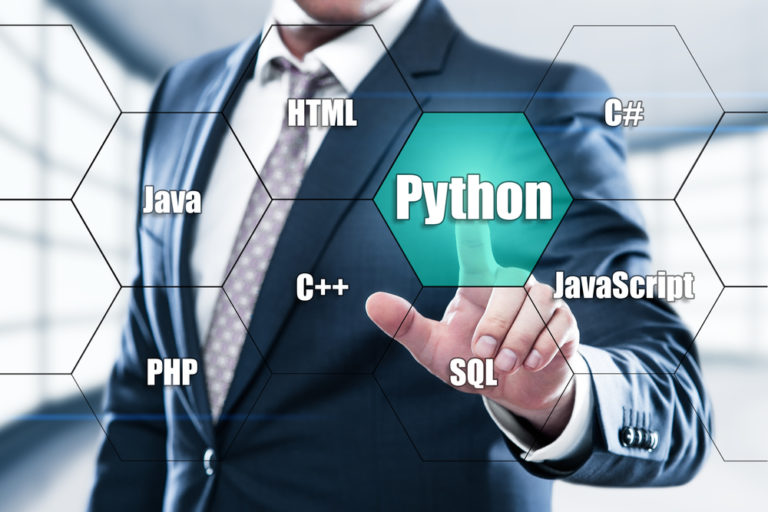
Why You Should Learn Python
Are you wondering why you should Best Way to Learn Python? There are a lot of reasons exactly why you should start learning and using Python. The top four reasons to consider learning Python:
Lots of Python-related jobs: As of now, there are almost 84,086 Python-related job openings at Indeed.com. The roles range from entry-level software engineer positions to high-level jobs like machine learning and artificial intelligence engineers.
Easy to learn: Python is surprisingly easy to understand and requires a short amount of time. Most industry professionals say that you can learn Python basics (Python’s syntax, keywords, and data types) in just between 6-8 weeks. If you have previous experience with coding languages.
Lots of free resources: There are a lot of resources and tutorials on the internet. From there, you can learn those Python basics without spending any money. Check out the Python comprehensive (and FREE) tutorial directly from the Python Software Foundation’s official website.
Although you should take a paid online course to learn Python fundamentals quickly and the right way. One Education also provides an excellent non-programmers Level 4 Python programming course.
Python is the popular kid among other coding languages: As we mentioned earlier, Python is going to become the world’s most popular coding language. You shouldn’t invest your precious money and time to learn a language that isn’t popular and vastly used enough to land a job. With Python, landing a job is not going to be a problem.
What is the Application of Python?
Ok! Now you have a general idea of what Python is, who should learn it and why it’s a good idea to start learning.
Best Way to Learn Python is easier to learn and use than many other coding languages. Its functions can be performed with simpler commands and with less text than other competitive languages. This may explain why it is growing in popularity with developers, coding students, and the tech industry.
Due to Python’s accessible and versatile nature, it is now among the world’s top five most popular languages. Many other organisations use Python to achieve their functionality, including YouTube, BitTorrent, DropBox, Wikipedia, Google (where Van Rossum worked), Yahoo!, CERN, and NASA.
The following are the Pythons primary use:
1. Web Development
One of Python’s main applications is scripting, helping to build websites and web applications. You can make web-applications at a rapid rate in Python. It is possible because of the frameworks, such as Pyramid, Django, and Flask is used in Python to create these applications.
In a web application, JavaScript is used to write all the code that is used in the front-end part of the application. The purpose of JavaScript or the front-end part of the application is to interact with the user and create what the user sees.
On the other hand, Python is used to write the Back-End part of the application, which is the application’s behind-the-scenes functionality. It is an important part that powers all the application functionality but that you don’t see the codes directly on the screen.
Python also manages the server-side of the application when the user requests data. It interacts with all the necessary databases and returns the requested data to the user to run the application as expected.
2. Scientific Computing & Data Science & Machine Learning
Nowadays, the use of Python in the field of scientific computing and data science has increased significantly. There are several science-friendly or science-specific libraries in Python. Below are some examples of science-specific libraries:
- AstroPy for astronomy
- BioPython for biology and bioinformatics
- Graph-Tool for statistical analysis of graphs
- PsychoPy for neuroscience and experimental psychology
In addition, using Python for web scraping is another technique frequently utilized in data science.
Well, if data science is not science enough for you, you can learn Machine Learning using Python. Python is also a significant language for machine learning, which is a tech field focused on artificial intelligence. Python’s machine learning libraries and frameworks are scikit-learn and TensorFlow.
3. Start-ups
Start-ups, especially tech company start-ups, prefer Python. Because it’s easy to use and scale across an entire company, this means that they can use Python to create a digital product that works for a handful of people. If the customer base grows to hundreds or thousands or even millions, the service provider can still update and maintain it. Also, the time required to learn Python style coding is very little compared to other popular languages, like C, C+.
4. The Financial Industry
Nowadays, Python is becoming increasingly popular for its potential applications in the financial industry. Well, the reason for this soaring popularity is Python’s usefulness in applications such as data regulation, analytics, risk management, and quantitative rate problems. Furthermore, there are many Python tools available that make it the perfect language for fintech and other finance applications. The following are a few examples of Python in the financial industry:
- NumPy
- SciPy
- Pandas
- Scikit-learn
- Cython
- PyTables
What are Phython Jobs
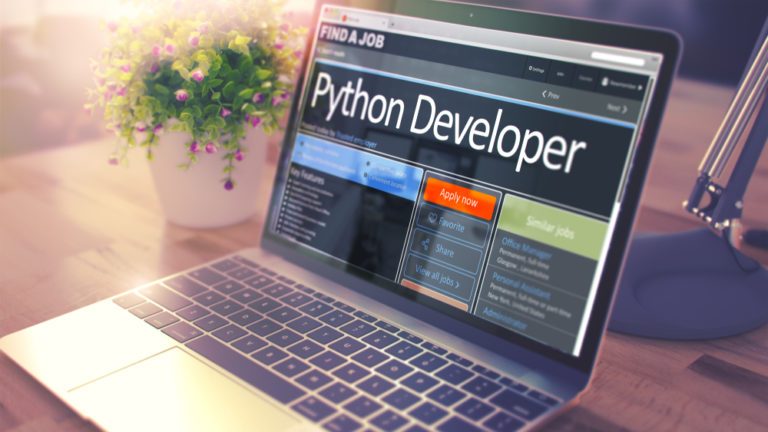
Python developers are in high demand. This is not only because the language is so popular and widely used. But, mostly for the fact that Python language became a solution in many different areas. These areas vary from web applications to data science and machine learning.
Python-related jobs are a little different than the coding languages jobs, and the job is tied to more specific-use coding languages. FOR INSTANCE, in HTML and JavaScript jobs, the tasks tend to change in web developers’ role. Python’s work is more diverse, which makes sense when you think of different ways you can use Python.
When you search for Python jobs on job sites such as Indeed, you’ll find these position:
Junior Positions
- Entry-level software developers
- Quality assurance engineers
- Junior Python developers
Higher-Level Positions
- Machine Learning Engineer
- Data Scientists
- Artificial Intelligence Researchers
The diversity of Python jobs can be confusing to you. But the best way to navigate these vast job listings and found the perfect job is to narrow down the list. To narrow the list, you need to decide:
- What kind of work do you want to do?
- What is your current level of experience?
- What job can you find with your experience? Read on!
Common Python Jobs
Entry Level Software Developer
As the name implies, this is an entry-level position. Entry-level software developers usually work on team-building software programs and web applications. Python is a common language for software development, but that does not mean you always have to use Python.
You can land your first software developer job if you have enough Python knowledge and experience. The average salary of an Entry Level Software Developer is £36,283 per year in the United Kingdom.
Junior Python Developer
This is an entry-level position and the most familiar roles for a Python developer if you have any web development background. The job description of junior Python specialists is building websites, developing mobile applications or software.
A junior Python developer’s role differs from the more general software developer because a Python developer focuses. In the United Kingdom, a junior Python developer annual average salary is £33,524.
Quality Assurance Engineer
Quality Assurance Engineer is an entry-to-mid-level role. The job detail is to examine software programs and web applications. They do not create the software they test, but they DO use scripting languages like Python to automate and execute their testing process. In the United Kingdom, a Quality Assurance Engineer annual average salary is £44,456.
Senior Python Developer
Senior Python developer is a mid-to-senior-level variant of Python developer. The job focus is the same as a junior python developer, but you need to have 3-5 years of experience developing Python. The average annual salary of a senior Python developer is £62,312 in the UK.
Data Scientist
The job roles of the data scientists are mid-to-senior-level. They are responsible for interpreting and extracting meaning or information from raw data. Data scientists usually have good background knowledge in mathematics, statistics, computer science, or other quantitative fields. Data science’s go-to programming languages is Python for its ability to automate and analyse data. The average salary for a Python data scientist is £53,557 per year in the United Kingdom.
Machine Learning Engineer
The job roles of the Machine learning engineers are another mid-to-senior level Python role. They develop machines, software programs, and other computer systems. Which are capable of “learning” and applying learned knowledge without specific instructions of developers. They often have an excellent background in mathematics and computer science, which can sometimes include a college degree. Python’s ability to manage algorithms and data automation makes it the first choice of programming tool for machine learning. In the United Kingdom, the average annual salary of a machine learning engineer is £56,892.
Best Way to Learn Python Step-by-Step
Learning Python is not easy if you don’t know what to do, what resource and guide to follow. On the internet, there are a lot of free and paid resources. Most of them are very confusing and require a lot of time for a beginner. Follow the steps below to learn Python in the best way possible.
Step 1: Figure out what motivates you to learn Python
Before learning it online, you should first ask yourself why you want to learn Python. Learning Python is a long and sometimes painful journey. You probably won’t make it through if you’re not motivated enough.
Figuring out what inspires you will help you find the ultimate goal and a path to get you there without boredom. You just have to figure out a general area, not the exact projects, which you are interested in and the reason behind learning python. Pick a common area from below, you are interested in to motivate you. The standard field of Python are:
- Data science / Machine learning
- Mobile apps
- Websites
- Games
- Data processing and analysis
- Hardware / Sensors / Robots
- Scripts to automate your work
Step 2: Discover What Python Is & What It's Used For
Before you begin to learn Python, you need to have a knowledge of what it is and why it is used. To put it simply, Python is a high level, interpreted, general-purpose programming language. It can be used for pretty much anything that doesn’t require a specific language. The following feature that makes Python so popular among beginners is:
- Python syntax is simple, which makes the programme relatively easy to use.
- Most programmers consider Python an easy language to learn, and it is the most commonly taught language in schools throughout the world.
- The coding language of Python is compelling. You can do pretty much anything with Python.
These easy and special features have led to Python becoming widespread throughout the world. Nowadays, Python is used in many fields, including:
- Back-end website development.
- Game development.
- Data science and analysis.
- Mobile app development.
- Robotics and AI
If you’ve ever dreamed of working in one of these fields, now is the time to discover the proper way to learn Python!
Step 3: Enroll in An Online Course to Learn Python
Online courses are an often-underestimated resource with incredible potential. In the modern world, to become a programmer does not require you to go to university and complete a computer science course. We, One Education, believe that online courses are a better way to learn Python programming. The following feature of online courses are:
- You can work at your own pace, which is perfect for full-time work and other committed people.
- The best online courses cover everything you need to know in a clear, concise way.
- Online courses let you go back to challenging concepts and sections as long as you like.
- The online courses are affordable. If you can’t afford an online course, there’s a scholarship programme for online classes which can help you learn without financial struggles.
You need to be very self-disciplined and motivated to learn through online courses. Keep in mind that not having a deadline or due dates can make it very hard to move forward, so make sure you remember it.
Step 4: Install Python on Your Computer
Python 2 and 3 are the two main versions of Python software. That means that you have to choose the right one for your own needs.
You need to install the python software if you want to use it with the Windows operating system. Apple computers do not need to install Python because they come with pre-installed Python software.
Installing Python on Windows Computer:
To install Python on your Windows computer, you will need to go to the Python downloads page. You will notice there are hundreds of different versions available in there. Download the latest version to learn the language and get familiar with its main syntax. Follow the prompts on your computer and install Python just like you would any other program.
Step 5: Get Familiar with Other Free Resources
Now that you have started working through your online course and downloaded Python on your PC or laptop. This is the right time to have a look at a few other resources online. Here are some of the best resources you can find while working on the way to learn Python.
- Reference Guides
- YouTube Videos
- Online Forums
Step 6: Discover Python Frameworks
Frameworks are programs that are specifically designed to make your life easier as a coder. Most of the Python frameworks are originally built for web development. These frameworks can be used to help you develop web applications faster. It also makes sure your code follows the best practices and gives you more time to focus on your work.
You should start getting familiar with the frameworks if you are serious about becoming a Python developer. The following are some of the most popular Python frameworks:
Django
Django is an open-source, free, full-stack web development framework. The aim of the framework is to provide developers with everything they need instead of relying on libraries. For this reason, developers throughout the world use this framework.
Flask
Flask is a smaller web development framework. It is designed to help you create a high-quality web app foundation for your website. It allows you to use extensions, where necessary in web developing.
Pyramid
Pyramid is almost similar to Django, but it focuses on simplicity and ease of use in web developing. The framework is compatible with applications of any size, which makes it popular among developers across the world.
These are only a few of the most common Python frameworks among others. While you’re learning Python, you don’t need to learn every feature of all of the most common frameworks. You need to make sure that you’re familiar with them, instead of learning all the framework features. For instance, what they are used for, and what are their main features.
Step 7: Start Your Projects
As of now, you should have figured out the best way to learn Python for your needs. You should also have a pretty good knowledge of Python basics and begin to understand how to create a program on Python. From here, the best thing is to do is start practising your coding skills.
Well, the way to learn Python is by practising what you already know by writing your programs. In Python, creating a simple program is easy. You don’t worry about trying to write the next best-selling piece of software or game; instead, you should focus on writing a simple programme. You should follow these steps to guide you when you first start writing the project:
- Brainstorm new ideas and concepts for your first simple Python programs. Write the new ideas down on some paper or note. From there, choose a few that seem interesting to you, and you think you can and have the knowledge to create the programme.
- The next is to start writing code for your program. Make sure that you test it in every step as you go. By doing this, you would have picked up on mistakes before they become major problems. You might find it helpful if you make and write a short plan detailing the necessary steps you need to take to write your program.
- After you have finished writing the programme, go through it. You need to make sure you have notes about what you did and why. You can post your code on an online forum and ask people to critique it for you.
Your first program will not be anything special, be prepared to receive lots of negative comments. But make sure that you take notes of this feedback and use it to improve your next program. Once you’re familiar with Python fundamentals, taking your skills to the next level involves understanding and applying advanced tools like the Python application monitoring tool from SolarWinds. This tool is indispensable for developers who are keen on optimizing performance and ensuring their Python applications run smoothly. It’s a crucial step between learning the language and professional Python development, especially for those looking to specialize in backend development or data science.
Step 8: Make Sure You Understand Error Codes
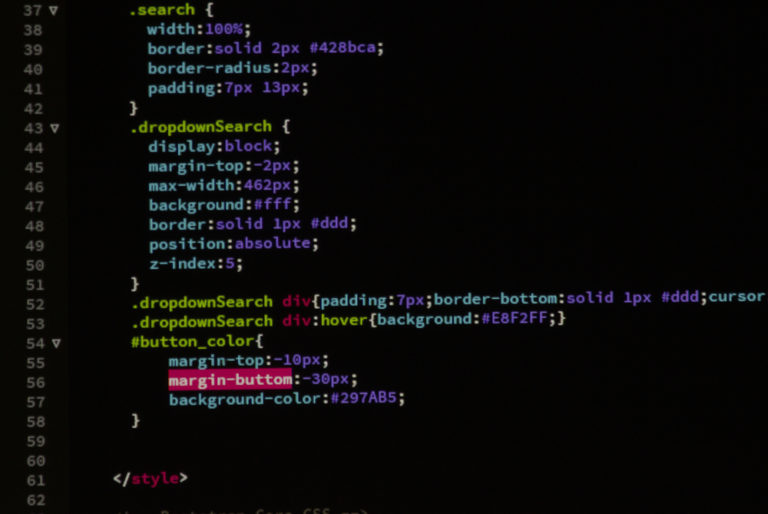
You should also take a crash course on Python error codes while you are learning Python. We believe that understanding error codes is a major part to learn Python. If you do not know the meaning of a specific error or how to fix it, you will not be able to fix any code effectively.
You should spend at least a few hours familiarising yourself with the common Python errors. Visit Python website for a full list of error types and learn how you can solve them independently.
Step 9: Keep working on harder projects and challenge yourself every day to Learn Python
To be a pro Python coder, you need to make sure that you are continuously improving your coding skills. If you feel comfortable about what you are building, increase the projects’ difficulty level and scope. There are different ways to challenge yourself every day.
Here is some challenge you can take to improve your coding skills:
- Help a beginner to build a project that you made.
- Improve your tool to work with more data, or can it handle more traffic?
- Make your program run faster.
- Make your tool useful for more people.
- How would you market the tool?
Where Can You Find Python Jobs?
After learning Python, finding a Python-related job is easy. You can search on the internet or follow the below link list to find your desired job:
- Python Software Foundation Jobs Board
- PythonJobs.com
- The Free Python Job Board
- Remote Python
- Indeed
- Glassdoor
- Reed.co.uk
You should also take a crash course on Python error codes while you are learning Python. We believe that understanding error codes is a major part to learn Python. If you do not know the meaning of a specific error or how to fix it, you will not be able to fix any code effectively.
You should spend at least a few hours familiarising yourself with the common Python errors. Visit Python website for a full list of error types and learn how you can solve them independently.
Related:
2. How to Learn Java From Scratch with a Right Learning Plan?
3. How to learn java from scratch in 2021?
Conclusion
Well, Python is evolving all the time and every day. Learning a new programming language like Python can be difficult for any novice. Only a few people can legitimately claim to understand the language completely, and they have created it.
Python is an enjoyable and rewarding language to learn. The job opportunity for Python developers is very high. To be a Python developer, you will need to learn continuously and work on new projects. If you do this right, you will be surprised when you look back on the codes you had written six months ago. If this is the case, that means you are on the right track. Only working on things that interest you means you will never get burned out or bored.






 January 03, 2024
January 03, 2024




